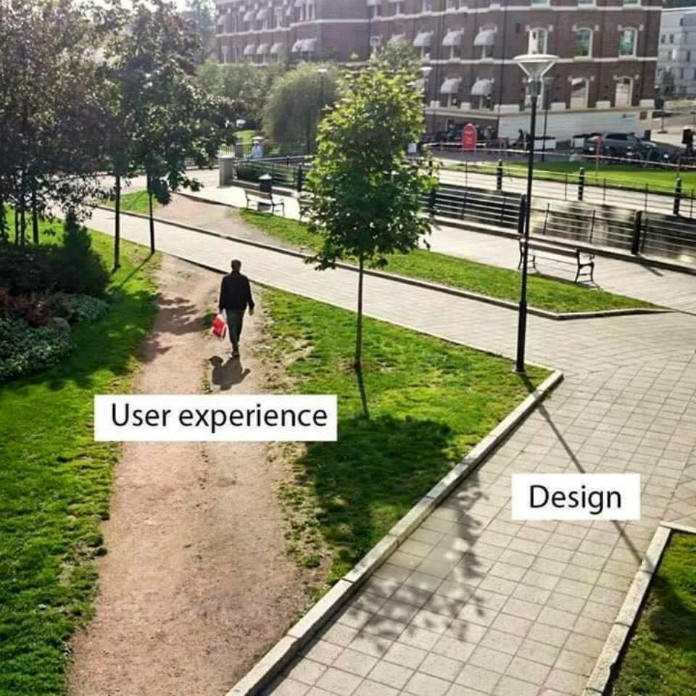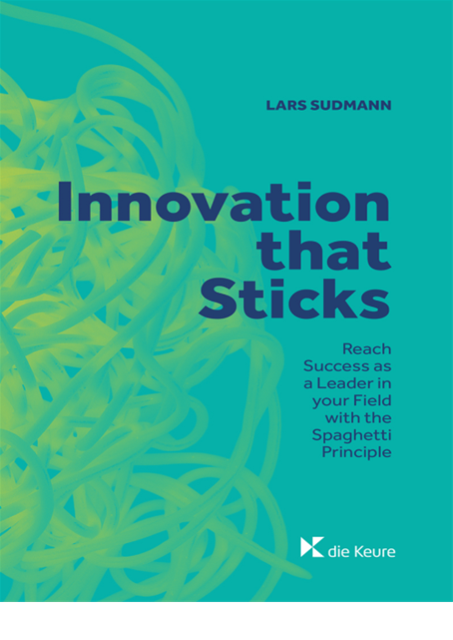“Two roads diverged in a wood, and I-
I took the road less travelled by,
And that has made all the difference”
This excerpt from the poem by Robert Frost always sounds so inspirational. But is it always right?
Is there always something magical about taking the road less travelled by?
Maybe, just maybe, it was less travelled because it was just a bad or uninteresting road.
In this famous picture below the stone road is clearly the one less travelled by. And for good reasons.
(Picture seen on patrickhansen.com, together with an in-depth analysis)
Nassim Thaleb calls that the Lindy effect: The tried and true that survived the test of time is probably what is the safest and best way forward. This is true for business and life.
Should we therefore just ignore Robert Frost and never walk the road less travelled by?
Of course not. The road less travelled by might lead us to somewhere new. It might lead us to the unexpected. To innovative products, new ideas. It’s also pretty empty on that road, because not many people go there, and that is why the quote above is so inspirational.
So, what do we do?
Reframe it: adopt a portfolio view
Maybe we should look at this problem from another angle and reframe the question: We don’t just come once at a road that forks in the wood, neither in business nor in life.
Let’s look at a game to illustrate this: Imagine you are offered to play a game where you have to pay 500 $ for tossing a coin in the air. Once it lands on the ground you check wether heads or tails is up. If it’s heads (50% chance), you get 1100 $ and if it’s tails (50% chance) you get nothing. Do the math, would you play that game?
Maybe you have a strong risk-appetite, but many people hesitate in the light of loosing 500 $ with a 50% chance, even if the average return is 550 $.
But now imagine that you can play that that game 100 times in a row. Now that game makes a lot more sense for an individual, as Prof. Bazerman and Moore highlight. Assuming the game is not rigged you will almost certainly end up ahead.
Also in life and business, it’s not just once that you come to a crossing in the woods. You travel many roads, in many woods. We all arrive at these crossings many times. And we should therefore look at our portfolio of choices.
The key is to take a step back from time to time and do the math for the portfolio view. Go into the crow’s nest of your ship and watch out for your activities. Be that as a corporate leader, as an IT portfolio manager or for your life in general.
How to adopt a portfolio view
The art of the optimization is then to build a portfolio of choices with two base strategies
- The road travelled a lot by: Improve it! Constantly even further improve the things that already work.
- The road less travelled by: Try it! Build in regular explorations and experiments into your routines, processes etc.
Here are some examples for this:
- As a company or project portfolio manager: balance optimization projects with new and radical projects. Geoff Tuff is credited with a 70/20/10 ratio for innovation projects, where an innovation portfolio should have 70% “standard” projects, 20% new ideas to be tested, and 10% radical ideas. This is even being updated these days to even further increase the percentage of the radical to more like. Whatever a good ratio is for you, it is good to watch that balance for a while, and to take stock.
- As a team: Regularly optimize the way you are doing meetings, by for instance doing a two-minute reflection on how you can optimise even more (streamline the reports, more interaction etc.) But make sure that you take a step back and give your team the chance to try out something truly new from time to time. Try out a new location. Try standing meetings. Try out and encourage the sharing of tips and ideas. This gives your team and fellow organisations also the right impression and sets the tone that it’s “ok to do new things here.”
- As an individual: One can consistently look at once own life, for example working style, productivity etc. and define what truly works well and see what little thing one can do to make it better. This can then be combined with trying out new things from time to time, for instance testing out a one new productivity app per month? Give for instance the Freedom app a try to help you find focus and stop being distracted.
When we implement this approach we combine the best of both worlds, we optimize the “tried and true” in small ways AND we constantly look for new things as well.
What should the optimal portfolio look like? As Barry Ritholt says “When it comes to investing, there is no such thing as a one-size-fits-all portfolio.” I believe the same is true for all kinds of portfolios. You have to start and measure what works for you.
So the key is to see the total amount of times that one travels, and to assess for yourself over time if you should take maybe every 3rd, or every 5th, or 20th time the road less travelled by. That exposes you to new ways, but ensures as well that in the long run you also don’t miss the benefits of the tried and true.
Life (and business) is a portfolio of choices
When you start thinking about a portfolio view of the roads you can take, rather than the individual choice, your perspective and maybe even your appetite for risk changes and you can happily take the road less travelled by from time to time and experiment more often.
So the next time you come across a fork and see two roads in the wood diverge, ask yourself: what does my total portfolio of choices over time look like? And take the road according to that.
******************************************************************
Lars Sudmann is an expert on high-performance leadership in global corporations. You can contact Lars to work with you as keynote speaker at your next event or strategy advisor for management teams. Search the “resources” area for TEDx talks, articles and more.




